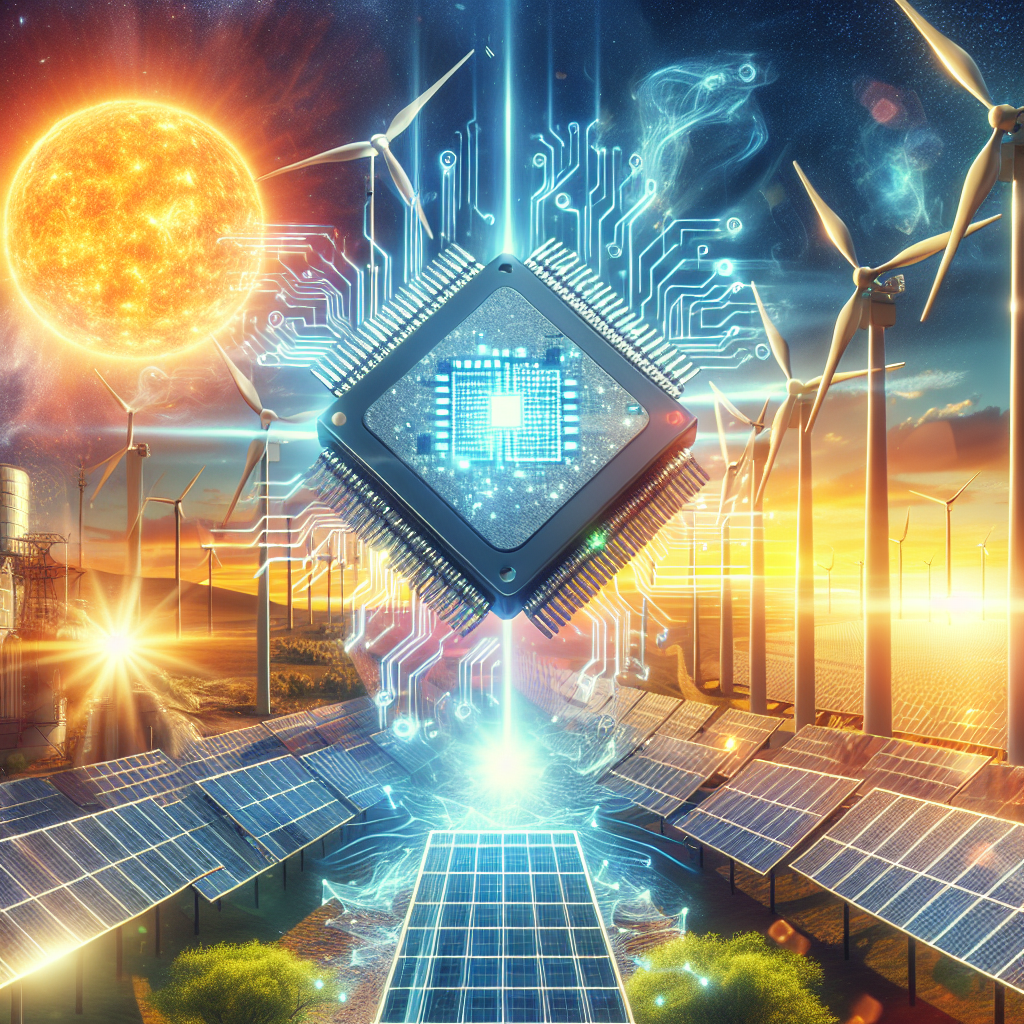The Power of AI in Renewable Energy Forecasting
Renewable energy sources such as solar and wind power are becoming increasingly important as we look to move towards a more sustainable future. However, one of the challenges of integrating renewable energy into the grid is the variability of these sources. Solar and wind power generation is dependent on factors such as weather conditions, making it difficult to predict exactly how much energy will be generated at any given time.
This is where artificial intelligence (AI) comes in. AI technology has the power to revolutionize the way we forecast renewable energy generation, helping to make the integration of these sources more reliable and cost-effective. In this article, we will explore the role of AI in renewable energy forecasting and discuss how this technology is helping to drive the transition to a cleaner energy future.
How AI is Improving Renewable Energy Forecasting
AI technology is being used to improve the accuracy of renewable energy forecasting in a number of ways. One of the key benefits of AI is its ability to analyze large amounts of data quickly and efficiently, allowing for more accurate predictions of renewable energy generation. AI algorithms can take into account a wide range of factors, such as weather patterns, cloud cover, wind speeds, and historical data, to make more informed forecasts.
AI can also help to optimize the operation of renewable energy systems by predicting when energy generation will be highest and adjusting energy storage and distribution accordingly. This can help to reduce costs and improve the overall efficiency of renewable energy systems.
In addition to improving the accuracy of renewable energy forecasting, AI technology can also help to reduce the impact of variability on the grid. By providing more accurate predictions of renewable energy generation, grid operators can better plan for fluctuations in supply and demand, helping to maintain a stable and reliable energy system.
Case Studies
There are a number of real-world examples of how AI is being used to improve renewable energy forecasting. One such example is the use of AI algorithms to predict solar power generation. By analyzing weather data, satellite images, and historical solar power generation data, AI can make more accurate predictions of when and where solar power will be generated. This can help grid operators to better plan for fluctuations in supply and demand, reducing the need for backup power sources.
Another example is the use of AI in wind power forecasting. By analyzing data from weather stations, wind turbines, and other sources, AI algorithms can make more accurate predictions of wind speeds and direction. This can help to optimize the operation of wind farms, improving energy generation and reducing costs.
FAQs
Q: How accurate are AI-powered renewable energy forecasts?
A: AI-powered renewable energy forecasts are generally more accurate than traditional forecasting methods. By analyzing a wide range of data sources and using advanced algorithms, AI can make more informed predictions of renewable energy generation.
Q: How does AI help to reduce the impact of variability on the grid?
A: By providing more accurate predictions of renewable energy generation, AI technology can help grid operators to better plan for fluctuations in supply and demand. This can help to maintain a stable and reliable energy system, reducing the need for backup power sources.
Q: Can AI help to optimize the operation of renewable energy systems?
A: Yes, AI can help to optimize the operation of renewable energy systems by predicting when energy generation will be highest and adjusting energy storage and distribution accordingly. This can help to reduce costs and improve the overall efficiency of renewable energy systems.
Q: What are some real-world examples of AI-powered renewable energy forecasting?
A: There are a number of examples of how AI is being used to improve renewable energy forecasting, such as predicting solar power generation and optimizing wind power forecasts. These examples demonstrate the potential of AI to revolutionize the way we forecast renewable energy generation.
Conclusion
AI technology has the power to revolutionize the way we forecast renewable energy generation, making the integration of solar and wind power more reliable and cost-effective. By analyzing large amounts of data and using advanced algorithms, AI can make more accurate predictions of renewable energy generation, helping to reduce the impact of variability on the grid and optimize the operation of renewable energy systems. As we continue to transition towards a cleaner energy future, AI will play an increasingly important role in helping to drive this transformation.

